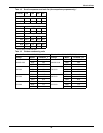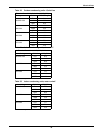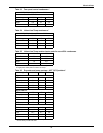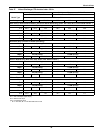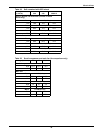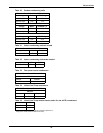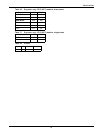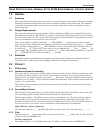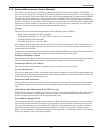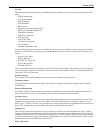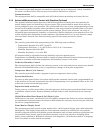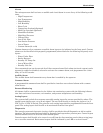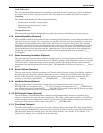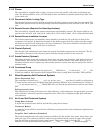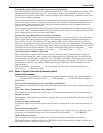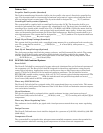
Electrical Data
53
2.1.4 Advanced Microprocessor Control (Standard)
The Advanced control processor shall be microprocessor based with a front monitor LCD display
panel and control keys for user inputs. The controls shall be menu driven with on-screen prompts for
easy user operation. The system shall allow user review and programming of temperature and humid-
ity setpoints, alarm parameters, and setup selections including choice of control type. A password
shall be required to make system changes. For all user selections, the range of acceptable input (tem-
perature, humidity, or time delay) shall be displayed on the monitor screen. The system shall provide
monitoring of room conditions, operational status in % of each function, component run times, date
and time, and four analog inputs from sensors provided by others.
Control
The control system shall allow programming of the following room conditions:
• Temperature Setpoint 65 to 85°F (18-29°C)
• Temperature Sensitivity +1 to +9.9°F (0.6 to 5.6°C) in 0.1° increments
• Humidity Setpoint 20 to 80% RH
• Humidity Sensitivity +1 to +30% RH
All setpoints shall be adjustable from the individual unit front monitor panel. The microprocessor can
be set within these ranges, however, the unit may not be able to control to extreme combinations of
temperature and humidity.
Temperature and Humidity Sensors shall be capable of being calibrated using the front monitor panel
controls to coordinate with other temperature and humidity sensors in the room.
Predictive Humidity Control
The microprocessor shall calculate the moisture content in the room and prevent unnecessary humid-
ification and dehumidification cycles by responding to changes in dew point temperature.
Compressor Short-Cycle Control
The control system shall include a program to prevent compressor short-cycling.
System Auto-Restart
For start-up after power failure, the system shall provide automatic restart with a programmable (up
to 9.9 minutes in 6-second increments) time delay. Programming can be performed either at the unit
or from the central site monitoring system.
Sequential Load Activation
During start-up, or after power failure, the microprocessor shall sequence operational load activation
to minimize inrush current. Systems allowing multiple loads to start simultaneously are unaccept-
able.
Chilled Water/Hot Water/Econ-O-Coil Flush Cycles
Chilled water, hot water, and Econ-O-Cool coils (if unit is so equipped) shall be automatically flushed
to prevent the buildup of contaminants. Systems without this feature shall include the necessary
devices to bypass fluid into the coil on a programmed basis.
Front Monitor Display Panel
The microprocessor shall provide a front monitor LCD backlit display panel with 4 rows of 20 charac-
ters with adjustable contrast. This display (along with five front mounted control keys) shall be the
only operator interface required to obtain all available system information such as room conditions,
operational status, alarms, control and alarm setpoints, and all user selections including alarm
delays, sensor calibration, DIP switch selections, and diagnostics. All indicators shall be in language
form. No symbols or codes shall be acceptable.



